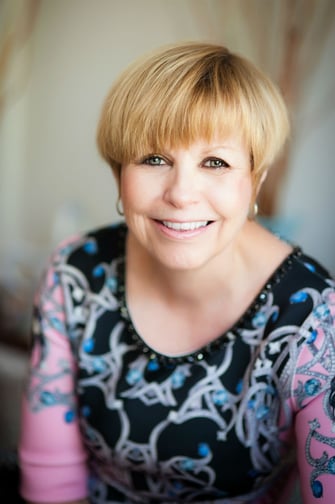

Carol Barton, president of AIG Multinational, talks about protecting businesses as they expand their global footprint and contemplates what’s ahead for underwriters
A seasoned insurance industry professional, Carol Barton is the global leader of AIG’s multinational division, charged with providing solutions for organisations whose business interests cross borders – an increasingly important focus in today’s rapidly evolving world.
“Twenty years ago, there were about 33,000 companies that did cross-border business globally,” Barton says. “Today, it’s probably 193,000 plus companies. It’s almost a business imperative to be multinational, but the landscape in multinational is changing. In every country, there are different regulations, a different cultural environment, and there is different employment law. From an insurance perspective, staying current and being compliant is critical.”
AIG’s solution to these challenges, Barton explains, has been to focus on a few key areas: “What we have been doing is investing in people, process and technology to drive insights, solutions with risk transfer and risk management capabilities, and service in a globally consistent and seamless fashion.”
The risk landscape
On the subject of new and emerging risks, Barton mentions the word on everyone’s lips: cyber.
“We’re seeing a huge uptick in take-up on [cyber insurance coverage],” she says.
But she stresses that it’s not just about providing cyber risk transfer solutions. Also integral is assisting clients in preparing for a potential cyberattack – particularly in light of the escalation in cyber risk that’s been driven by heightened connectivity as a result of the internet of things.
“While it is a plus in many regards to have so much connectivity … it is also creating a very porous environment where people can get in,” Barton says.
She adds that part of the challenge of cyber is the fact it’s an aggregation risk.
“It’s not just about an individual company; it’s about how many potential companies might be impacted by the same event. It’s similar to supply chain risk, which is getting ever more complicated, as well, as a result of the internet of things.”
Barton considers global aggregation exposure to be the greatest challenge facing the insurance industry today.
“For me, the biggest challenge in terms of helping our clients is to really look at some of these emerging risks, look at the fact that most of them are aggregate exposures, and then managing that in a way that we will be there for our clients when an event occurs.”
Another major challenge under Barton’s purview is contract certainty.
“For multinational clients, it would be getting policies out in a way that gives them contract certainty when the loss occurs, and that has historically not been done,” she says.
“We’re very focused on a new multinational, end-to-end process where we have taken the work and lifted it ahead of the effective date so that we end up with policies issued on or before the effective date. We rolled that out last year, and we are starting to get traction.”
It’s a work in progress, Barton adds, but it’s an effort to reshape the way business is conducted.
“We are very excited about it because it will give our clients contract certainty and meet their governance objectives as well,” she says.
Tomorrow and beyond
Barton expects the role of underwriters to change in the coming years, thanks to the proliferation and exploitation of information.
“The availability of data and our enhanced ability to start to collect data and use it in a way that can inform underwriters should really help with the risk selection and underwriting process,” she says.
“One of the trends we’re seeing is the ability to take claims data and use that for both underwriting risk selection and to help the client understand exposures that threaten their business, thereby allowing them to drive down their long-term cost of risk.”
She also emphasises the significant role data can play in helping underwriters – and their clients – learn from losses.
“The ability to share knowledge and understanding is critical, and insurance carriers are uniquely positioned to deliver. I think more and more, with technology, we will be able to do a better job at that.”
Barton also anticipates that the future will bring greater appraisal of risk from a holistic perspective.
“We have grown up as a very product-oriented company – you had property people, casualty people, financial lines people … and now, I see that coming together in a more holistic view,” she says.
“You will still have your expertise, but I think underwriters will work more as a team to provide holistic solutions versus staying in their product silo.” In times ahead, Barton also foresees underwriters will have increased interaction with clients.
“Underwriters will be interacting more with brokers and clients … and [there will be] a lot less focus on administrative, transactional, non-value accretive-type activities. I think it will be a lot of fun – it will be even more interesting than it is today.”
In looking towards the future, Barton also emphasises the ongoing importance of the broker channel to AIG.
“We obviously see our broker partners as very critical and important, and we are always looking for continuous improvement opportunities and for feedback from them on how we are doing [and] what we can do differently … and then how they can support us, because a relationship is two-way.”
As for the year ahead, Barton is focused on AIG’s global goals, including delivering on the two-year targets the company set in its January 2016 strategic update.
“We are well on the way to delivering on that plan,” she says. “We have released $18bn to our shareholders. Our goal is $25bn over the two-year period, and we have every intention of returning the rest and achieving that target, as well as the other goals that we publicly stated.
“We are committed to continuing to really sharpen our focus and being sure to work with clients, where we can add the most value.”
